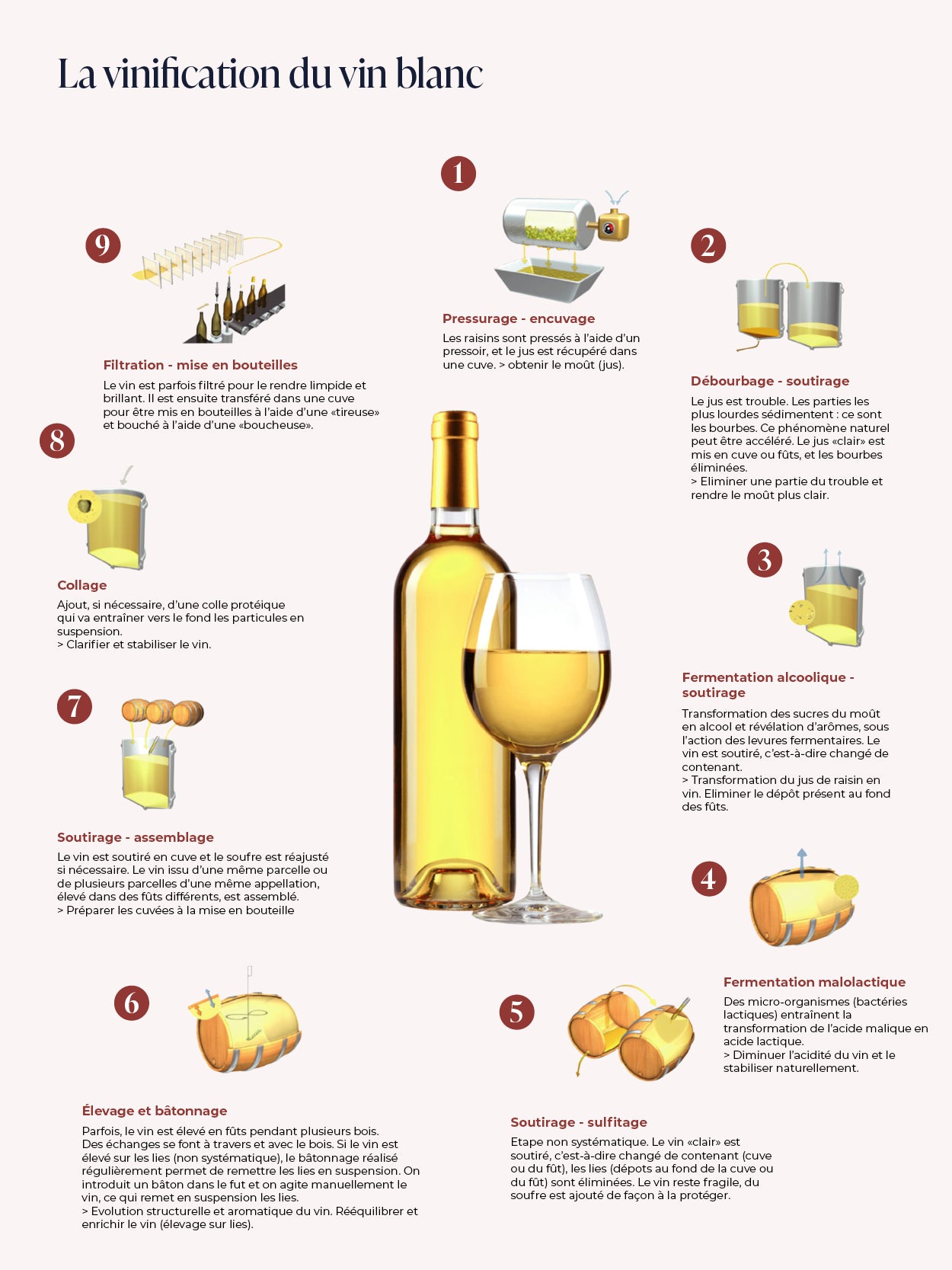Elaboration
What are the different steps in the process of making white wine?
White wine vinification involves 8 steps, some optional and some mandatory: harvesting, de-stemming, fulling, pressing, settling, alcoholic fermentation, racking, ageing, clarification and bottling.
How white wine is made ? The 8 steps of winemaking

1. Harvesting and preparing the grapes
It is at harvest time that the grapes are picked when they are fully ripe, from August to October, and in November for late harvests (over-ripening). White wine is made from white or black grapes which, despite appearances, still have white flesh. There is no skin maceration for white wine. It is during this stage that the wine takes on its colour. On contact with the juice, the pigments contained in the berry skins give the rosé or red wine its brilliant shades.
The bunches can then be destemmed, which consists of separating the grape berries from their stalks, the plant support of the bunch. This operation concerns red wines more than white wines. After destemming, the grapes are crushed to encourage extraction of the must by slightly breaking up the berries. This operation is not compulsory for white wines.
2. Pressing
After the harvest, the grapes are generally placed in a press to extract the juice from the berries.
3. Settling
This step helps to clarify the must obtained after pressing by making the particles fall to the bottom of the vat, making the precious nectar cloudy.
4. Alcoholic fermentation in vats
This is when the sugar in the must is transformed into alcohol in the vat by the yeasts (indigenous or added during fermentation by the winemaker). Alcoholic fermentation is the key to the wine's aromas and flavours. During this period, the winemaker controls the density of the must and the temperature. The duration of fermentation in white wine varies. It is longer for sweet white wines.
The term "malolactic fermentation" is used to describe the second fermentation that takes place after the lees (the deposits formed by the yeasts) have been removed and the alcoholic fermentation has finished.
5. Racking
After fermentation, dead yeast accumulates in deposits. These particles make the wine cloudy. They are removed when the wine is racked. This is done by emptying the vat and decanting the wine several times.
6. Ageing in vats or barrels
Ageing consists of clarifying and stabilising the wine. White wine is matured in stainless steel, concrete or barrels, depending on the wine. It also helps to enrich the wine's aromas. Ageing generally includes racking and clarification. This step is not mandatory.
7. Clarification
Clarification removes residual deposits from the wine. Several techniques are possible: filtration, sedimentation or fining. The winemaker may or may not choose to filter the wine. This step in the winemaking process adds brilliance to the wine.
8. Bottling
Bottling is the final step in the winemaking process before the white wine is launched.

Aveine's tip
Orange wine is a white wine that has been macerated, like red wine. It is the process of maceration with the grape skins that gives it its colour.
